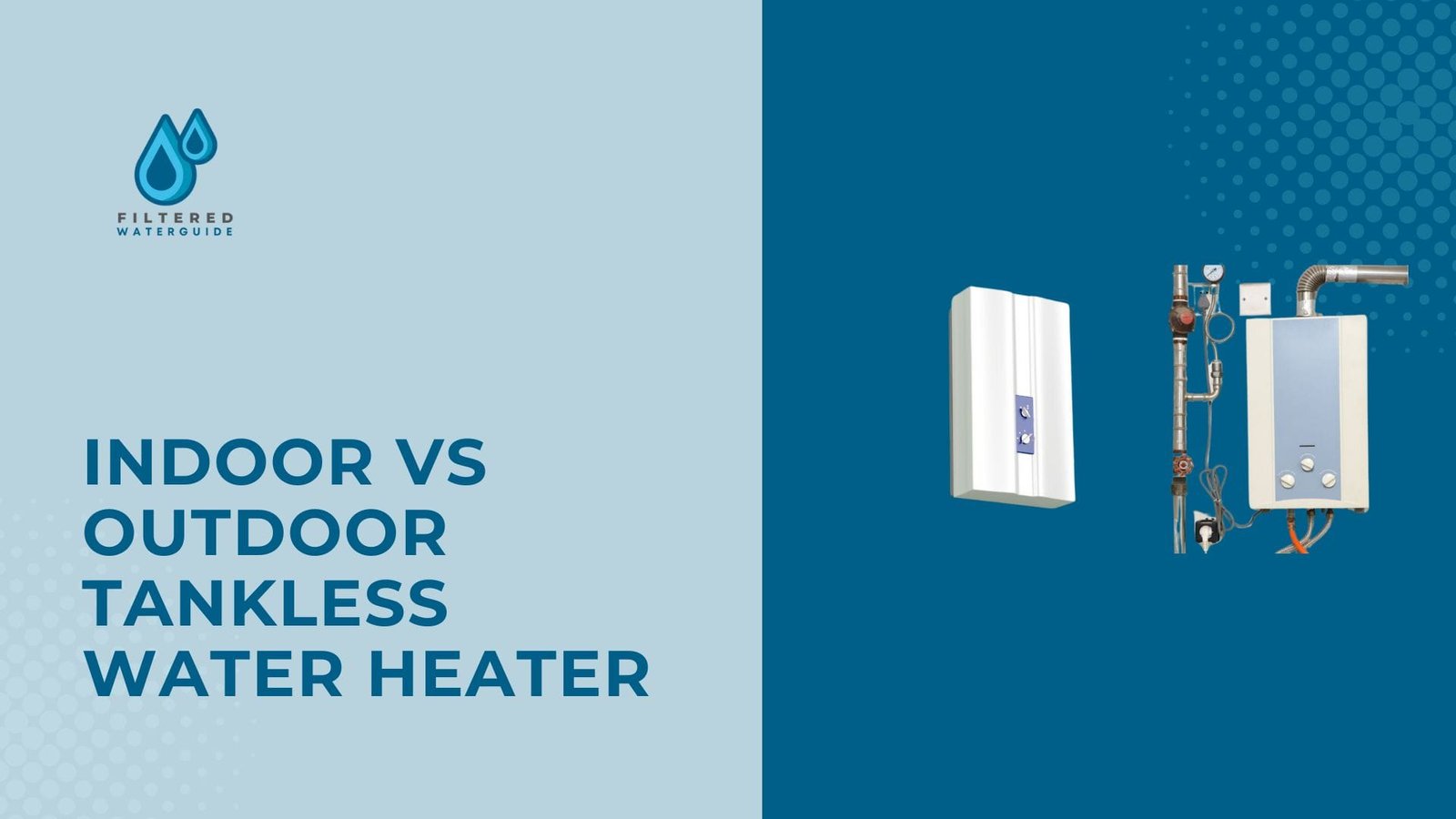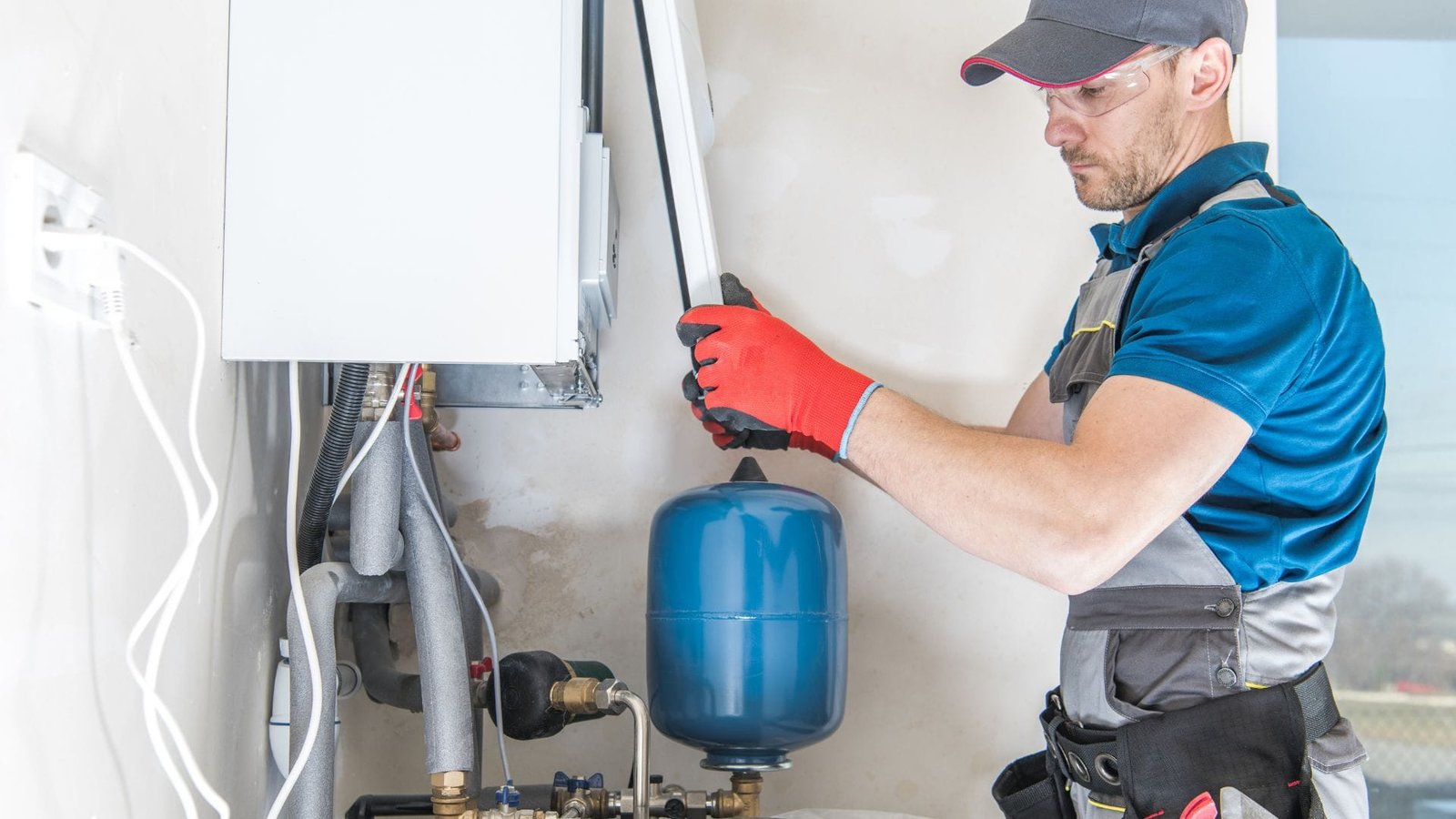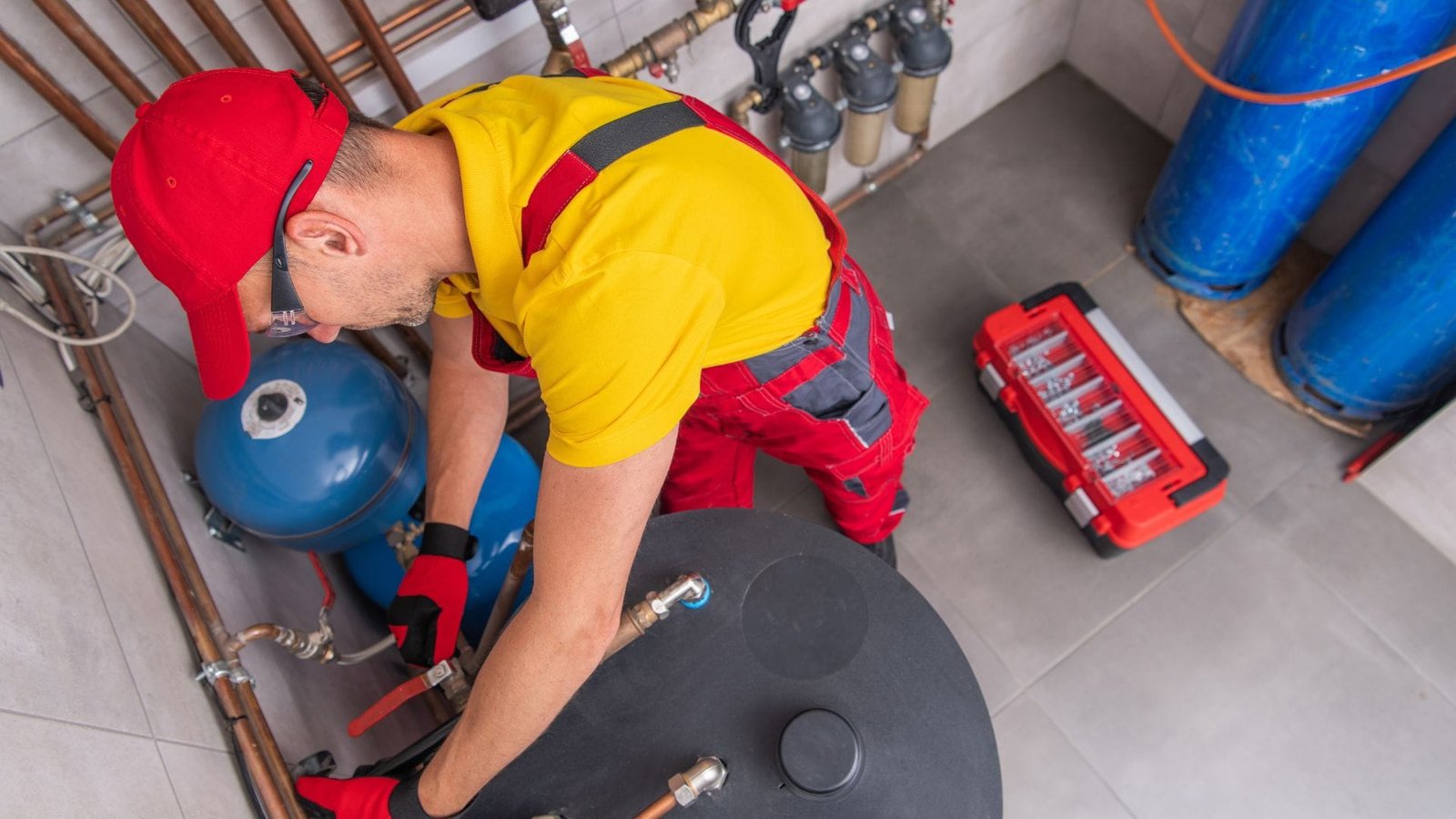Filteredwaterguide.com is supported by readers. If you purchase through referral links on our site, we make a commission at no extra cost to you. Learn more.
Home » Water Heaters » Best Indoor vs Outdoor Tankless Water Heater Review: Expert Guide

Making the switch to a tankless water heater opens up an important question: should you install it indoors or outdoors?
Through our extensive hands-on testing and professional installations, we’ve discovered that both options have distinct advantages worth considering.
In this comprehensive guide, our team of master plumbers and industry experts breaks down everything you need to know about choosing between indoor and outdoor tankless water heaters.
Our experience with countless installations has shown several compelling reasons to choose an indoor tankless water heater setup.

Cold climate protection is a major advantage we’ve observed with indoor installations.
If your region experiences freezing temperatures, even just seasonally, installing your tankless heater indoors provides natural protection against freeze damage.
We’ve found that indoor units typically need minimal winterization – just basic pipe insulation near exterior walls does the job.
This is a stark contrast to outdoor units, which require extensive cold-weather preparation.
We’ve also noticed indoor installations work particularly well in areas with harsh coastal conditions or strong winds, where outdoor units might face accelerated wear and tear.
When working with new construction projects, we’ve consistently seen that planning for indoor tankless water heaters from the ground up makes excellent financial sense.
This is particularly true for gas-powered units, where we can integrate proper venting and gas lines during the initial build phase.
Our real estate contacts confirm that energy-efficient indoor tankless systems, especially gas models, can boost a home’s market value thanks to their lower operating costs and protection from weather-related issues.
Despite these advantages, our installation team has identified several potential challenges with indoor units that homeowners should consider carefully.
Through our installations, we’ve learned that proper venting isn’t just recommended for indoor gas heaters – it’s absolutely essential for safety.
Without adequate venting, dangerous gases could accumulate inside your home.
We often find that homes without existing venting systems require substantial modifications, which may need building permits and additional construction work.
Based on our field experience, indoor gas heaters demand yearly professional inspections.
We strongly recommend having a certified HVAC technician examine your unit annually to:
Skipping these inspections isn’t just about maintenance – it’s about protecting your family from potential carbon monoxide exposure.
Through numerous installations, we’ve discovered that gas tankless units can produce significant condensation during operation.
Proper drainage is crucial to prevent water damage in your home.
Our team always installs a dedicated condensate drain system, typically routing it to:
In our testing, we’ve found that all tankless heaters produce some operational noise, but indoor placement makes these sounds more noticeable.
Gas units tend to be louder than electric models, and when installed indoors, the operating sounds can be more apparent in living spaces.
Our installation experience has taught us that while tankless units are much smaller than traditional tanks, they still need dedicated space for:
This can be particularly challenging in smaller homes where every square foot counts.
While tankless heaters generally leak less than traditional tanks when problems occur, our maintenance team has observed that indoor units can still cause property damage if they develop leaks.
This is especially true near the end of their service life, when small leaks become more common.
After installing hundreds of outdoor units, we’ve identified several compelling benefits that make them an attractive option for many homeowners.

We’ve found that outdoor installations, particularly for gas units, are remarkably straightforward.
No structural modifications are typically needed, which is a significant advantage.
The shorter venting requirements eliminate condensation concerns, removing the need for complex drainage systems.
This is particularly beneficial in homes where inadequate drainage might otherwise compromise the heat exchanger’s longevity.
Converting from a traditional tank to an outdoor tankless system consistently proves faster and more economical in our experience.
The simpler installation process reduces both labor hours and material costs significantly.
Our installation teams particularly appreciate the placement flexibility of outdoor units.
While indoor installations often require structural modifications, outdoor units can be positioned almost anywhere with access to:
We’ve found this especially beneficial when installing multiple point-of-use electric heaters, as it preserves valuable indoor space.
Important placement tip: Through our installations, we’ve learned that positioning matters significantly for efficiency.
We recommend installing outdoor units close to primary hot water usage points (like bathrooms) because:
Despite these advantages, our professional experience has revealed several important considerations before choosing an outdoor unit.
Through years of installation experience, we’ve identified weather protection as a significant consideration for outdoor units.
Cold weather protection is particularly crucial:
Our product analysis reveals that outdoor units typically come with a higher price tag than their indoor counterparts.
This price difference primarily stems from:
Based on our service calls, power outages during cold weather pose a serious risk to outdoor units.
We’ve observed that homeowners in areas prone to:
Should carefully weigh this vulnerability, as freeze protection failure can permanently damage outdoor units.
Our installation teams frequently navigate complex building regulations regarding outdoor heater placement.
Some key considerations we’ve encountered:
Should carefully weigh this vulnerability, as freeze protection failure can permanently damage outdoor units.
Through our maintenance service experience, we’ve identified security as an important factor for outdoor installations.
Risk factors we evaluate include:
While security cameras can help protect your investment, they represent an additional cost to consider.
Our team has found that protected locations like:
Significantly reduce security risks, though they may not be options for all properties.
After conducting hundreds of installations and analyzing countless customer scenarios, we’ve developed this straightforward comparison guide to help you choose the right option.
| Indoor Installation | Outdoor Installation | |
|---|---|---|
| Cold or Windy Climate | recommended | |
| Lack Setup for Indoor Gas Heater | recommended | |
| Poor Interior Drainage | recommended | |
| New Home | recommended | |
| Limited Space | recommended | |
| Spend Less for Unit | recommended | |
| Gain a Quiet Home | recommended | |
| Vandalism Concerns | recommended | |
| High Risk of Power Outages | recommended | |
| Several Point-of-Use Heaters | recommended |
Ready to select your ideal tankless water heater? Our team has thoroughly tested the top models on the market. Check out our detailed reviews to find the perfect unit for your needs.